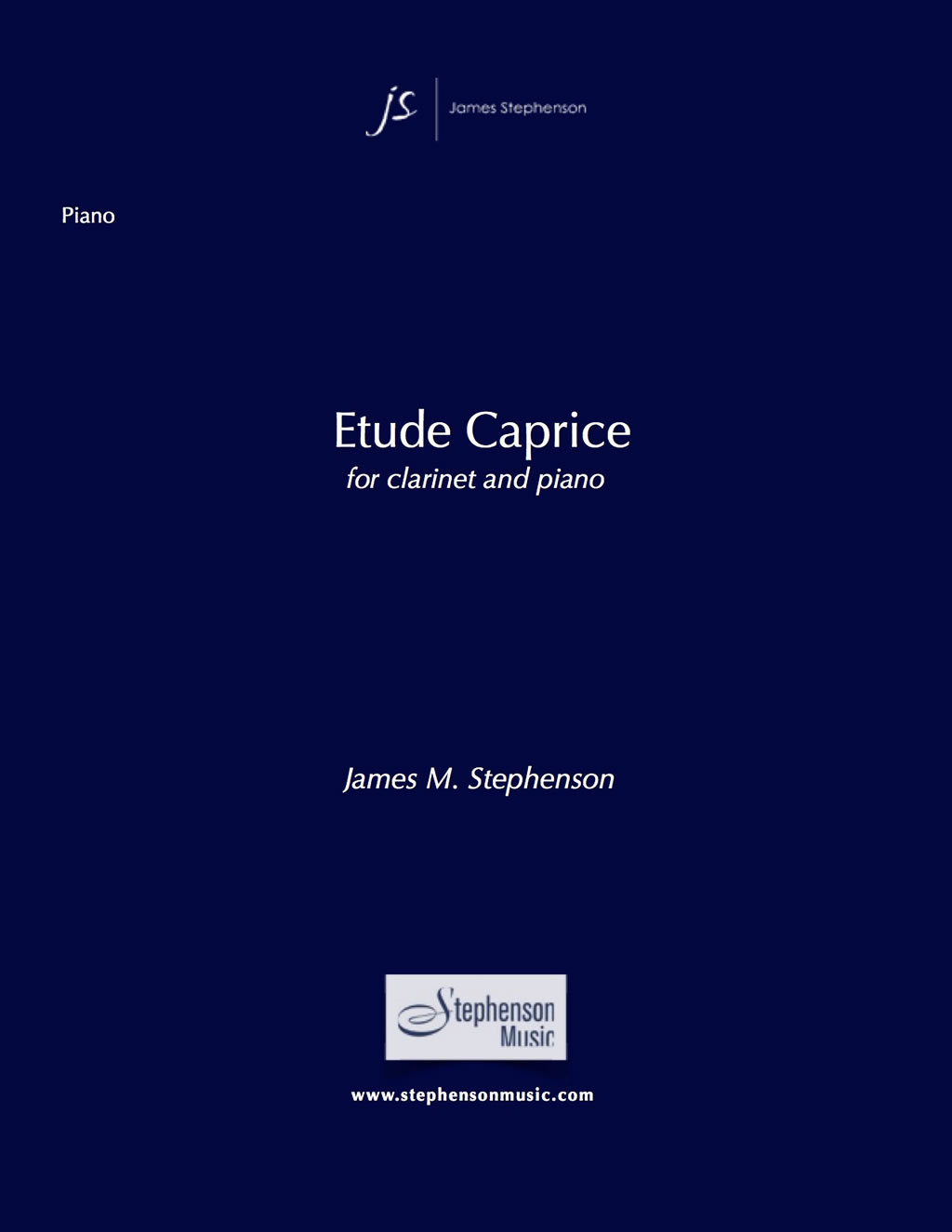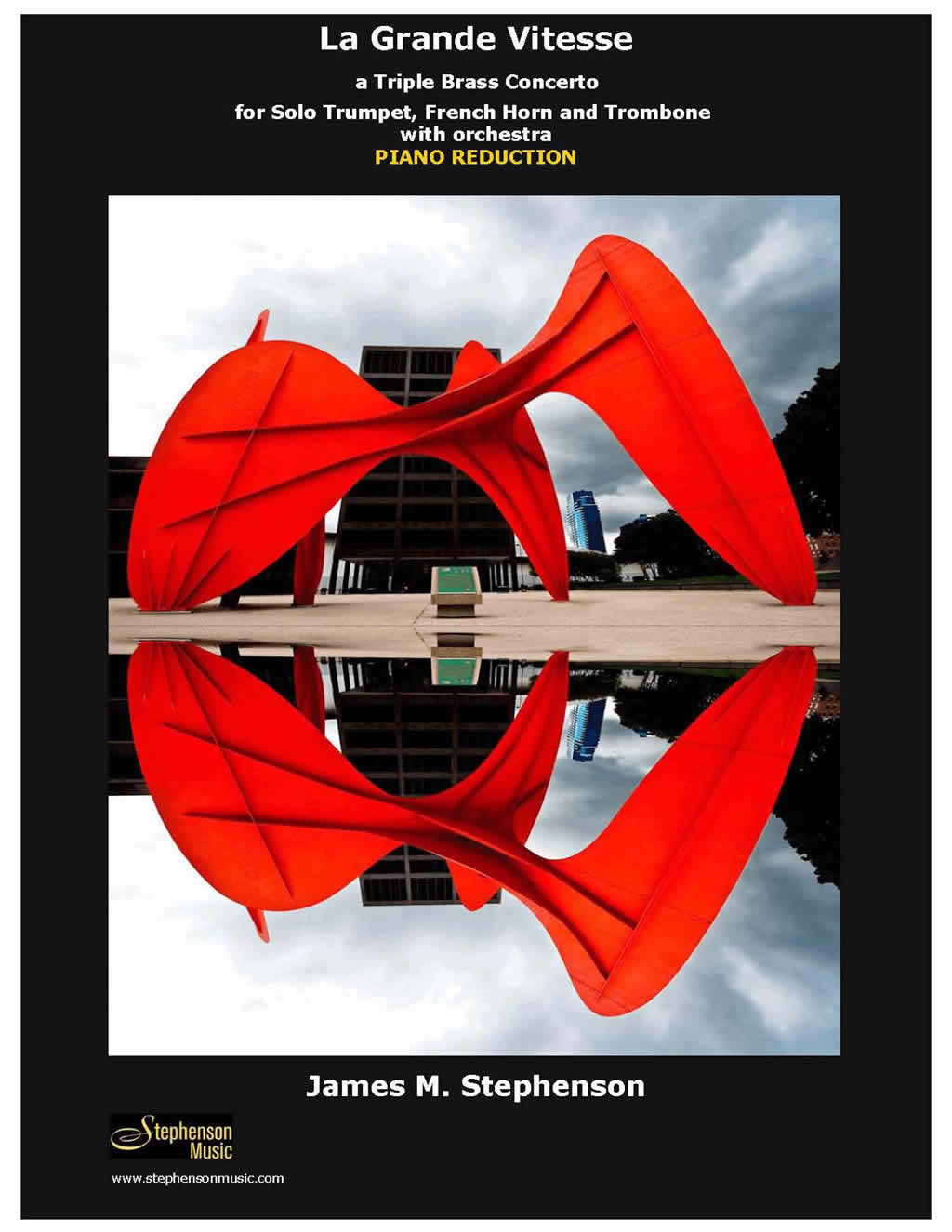Sonata For Clarinet and Piano
$35.00
For Clarinet and Piano.
Description
The Sonata for Clarinet and Piano came about through a discussion with John Bruce Yeh,
Assistant Principal Clarinetist with the Chicago Symphony. I first got to know John through the collaborative effort to co-commission and premiere at Ravinia (the CSO summer home) my “Devil’s Tale”, sequel to Stravinsky’s “Soldier’s Tale”. I did not know at the time John’s fervor for new music and collaboration, but it was due to that revelation that the idea of a clarinet sonata sprung up. Together we put the word out that we’d like to co-create a new work, and much to our delight, 25 clarinetists (listed below) pledged their support to the sonata project.
The piece was initially to be premiered in the spring of 2016, but John got an invitation to do a recital at
Interlochen Arts Center in November of 2015. Interlochen is where I spent 7 summers, 3 school-years,
and 2 years teaching (trumpet), and I knew that this was an opportunity to not let slip by – for artistic and
personal reasons – so it was time to get to work. I wrote the work in the last 2 weeks of October, handed the score off to John and the very accomplished accompanist at Interlochen, Nozomi Khudyev, and let them do the rest!
The music:
The sonata is in four movements, but with a twist. It is at its core a typical 3-movement sonata – fast-slow-fast. But due to John’s exemplary E-flat clarinet playing, which I have so often witnessed at CSO concerts, I decided to offer an optional movement (Interlude) for clarinetists to play on E-flat clarinet only if they so choose.
The first movement offers both lyrical and technical opportunities in a mostly tuneful exploration of D minor. As to be expected, the clarinet and piano converse back and forth, and my personal bent toward jazz-inflected harmonies reveals its head once again. This continues in the second movement – now in G minor – the most personal and introspective movement of the sonata – where lyricism and beauty preside over a mixed-meter. The optional Interlude – still in G minor – provides brief relief from the surrounding movements. Subtitled “Jam-Bourrée”, it is a cross between baroque counterpoint, and somewhat bi-tonal relationships. The final movement opens with confused frenzy amongst the performers, before materializing into the main melodic material, again infused with mixed-meter grooves. Many themes of the sonata are restated, before the final buildup drives to a literal high-pitched resolution in G major.
It is with much pride that I am able to add this work to the clarinet repertoire. I am so thankful to all who helped the project come to fruition. Therefore, it is with humble gratitude that I list them below. Thank you all!
Jim Stephenson; November, 2015
Dr. Elizabeth Aleksander – Asst. Professor of Music, University of Tennessee at Martin
Aaron Alter
Gabrielle Baffoni – Southeast Missouri State University
Dr. Patrick K. Carney – Limestone College
Daniel Coombs
Erik Franklin
Christa J. Frye
Jennifer Gerth – Principal of the Duluth Superior Symphony Orchestra
Tammy Gibson
Myroslava Hagen – Instructor of clarinet
David Hattner – Music Director, Portland Youth Philharmonic
Sandra Jackson – Eastern Michigan University
Anne Kleve
Steven Lipsitt
William Kaufman, in honor of his 90th birthday
Dr. Thomas M. Parchman – Principal Clarinet, Portland (ME) Symphony; Prof. of clarinet, University of Southern Maine
Christopher Nichols – University of Delaware
Sheri L. Rolf, MD – Great Falls Symphony
Kevin Schempf
David Shifrin
Andrew Sprung – Hillsdale College
James Sullivan
John P. Varineau – Grand Rapids, MI
John Warren
John Yeh
Additional information
| Duration | |
|---|---|
| Featured Instrument | |
| Type of Purchase | |
| Type of Work |





